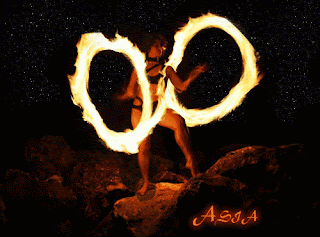In my opinion, I think belly dance is a great thing for children to learn. Since there are quite a few reasons
Belly Dance for Kids Dance is a natural means of expression for children; they move their bodies with a sense of freedom that is often somehow lost along the way to adulthood. Ask any child if they can sing or dance and you will probably hear a resounding ‘Yes, of course!’ My philosophy about teaching belly dance to kids is that it need not be difficult for them. Each child is different and progresses at a different rate and this is ok. When it comes to children’s classes at Cinnamon Twist the team of teacher’s encourage a supportive and non-judgmental atmosphere with a focus on fun rather than on formal technique training.
For most children, the experience of attending a dance class with a gentle and encouraging teacher can have a lasting positive impact that can take them well into their adult years and even stay with them for life. On the other hand, a negative experience in a dance class can have an equally lasting effect. Up until recently the first (and sometimes only option) for many mums was to enrol their children in ballet, jazz, or tap dance classes. However, if truth be told - these styles of dance are not always suitable for all girls. A mum once told me how she felt absolutely heartbroken when her shy 6 six year old daughter attended a ballet class and left sobbing when the teacher had told her she would never be a ballerina because she had ‘flat feet’ and ‘bad hips’.
After enrolling her daughter in belly dancing classes she was thrilled when in the very first class her daughter beamed when she learned that “in belly dancing your feet stay flat on the floor” and your “hips have a life of their own!” It is this grounded nature of belly dance that makes it particularly accessible to kids and adults alike. Benefits of Belly Dance * Fitness benefits – cardiovascular, muscular, energising * Learn teamwork, focus, and improvisational skills * Promotes good self-esteem * Low-impact, develops flexibility * Improved posture and muscle tone * Helps to strengthen pelvic floor muscles (a bonus for new mums!) * Improvement in gross/fine motor skills, improves co-ordination * Development of spatial awareness * Music appreciation and learning about other cultures Today, kids and their mums have a rich variety of dance styles to choose from and belly dancing offers girls a wonderful opportunity to explore movement vocabularies totally different from Western styles they may have tried already. When I was invited to write this article for CoastKids I decided to have a chat with our Little Genies, the girls in our 9-14 years age group.
I asked them a number of questions about why they liked belly dancing and they gave a variety of reasons I was expecting to hear such as the opportunity to make friends, they liked the colourful and noisy dance costumes, and the interesting music. However, the girls also told me some things I was not expecting to hear about the way it makes them feel to dance creatively, to feel like part of a team, to enjoy the positive reactions of audiences when they performed. The responses of the girls showed a maturity and awareness about what it means to belly dance that took me by surprise. What the kids have to say: Rachael(10yrs) – “I love cultural aspect of belly dance, it’s adventurous” Trina(9yrs) – “Belly dance gives me energy and its good exercise. I love my teacher; Kim is kind and tolerant and patient” Barbara(10yrs) – “I love meeting new people and learning new things,” “I like our Cinnamon Twist tops and what they represent” Claudia(12ys) – “meeting new people, learning new things, making friends”. “When everyone claps at the end of our performances it makes me feel really happy”. Georgia(9yrs) – “my mum is a belly dancer and I think it’s really cool. I feel proud to perform in my Cinnamon Twist shirt”. Lianna(10yrs) – “I like that belly dance is not competitive” and “I like it when people smile when I dance”. Madison(10yrs) – “I like to perform and the jingly costumes” Olivia(10yrs) – “I like it because I’m good at it. I’m destined for belly dancing!” What the mums have to say: Julia- Since my daughter started belly dance lessons her self confidence has grown, along with her balance and coordination. Kim- I have noticed how [my daughter’s] confidence has grown, she is not as shy now and looks forward to Cinnamon Twist performances to show of all the fantastic things she has learned. Lisa - My daughter has a great time in class and looks forward to her lesson each week. When she gets home she dances around the house and shows her dad what she learned. Mary - Overall belly dance has been a fun, positive experience for my daughter. I would definitely recommend this to other parents. Being part of a dance class is much more than just learning how to dance it also helps to instil valuable life lessons like working with others, moving in rhythm (physically and socially) with a group of their peers, and understanding and accepting the differences between each other. Belly dance introduces kids to music they may not hear anywhere else, a movement vocabulary that helps develop their fine and gross motor skill, and enables them to explore new forms of creative movement in a safe and warm environment. As one student commented, “in belly dancing class I can be myself”.
Published in CoastKids Illawarra July/August 2009 - all material and images copyright Virginia Keft-Kennedy




























